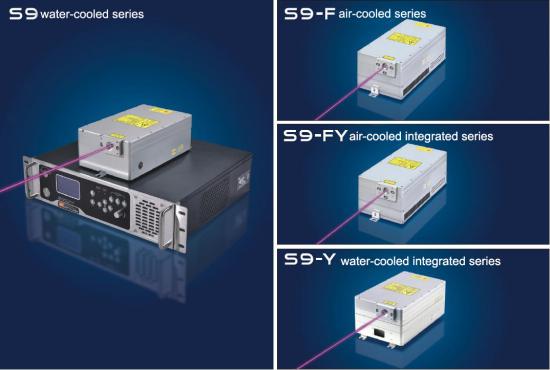Последний блог
Какие факторы влияют на гравировку на стекле с помощью ультрафиолетового (УФ) лазера 355 нм
Jun 21 , 2022Какие факторы влияют на гравировку на стекле с помощью ультрафиолетового (УФ) лазера 355 нм
УФ-лазерная маркировка на плоском стекле напрямую связана с пиковой мощностью лазера, размером сфокусированного пятна и скоростью гальванометра.
Мы обнаружили, что иногда свет мощных лазеров не травит поверхность стекла, а проходит прямо сквозь него. Это связано с тем, что пиковой мощности лазера недостаточно, или плотность энергии недостаточно сконцентрирована. Пиковая мощность зависит от лазерного кристалла, ширины импульса и частоты. Чем уже ширина импульса и ниже частота, тем выше пиковая мощность лазера.
Хотя некоторые из них могут быть выгравированы на поверхности стекла, это все же создает явление точек утечки, а некоторые точки, образованные импульсом, погружаются в стекло, образуя внутреннюю резьбу. В этом случае для оптимизации можно использовать лазеры с высокой пиковой мощностью и расширение луча с большим увеличением. эффект обработки.

ультрафиолетовый лазер | зеленый лазер | Ультрафиолетовые лазеры | ультрафиолетовый лазер dpss | наносекундный лазер | УФ лазерный источник | Твердотельные лазеры
In addition, the time that the laser beam contacts the glass surface also affects the etching effect of the glass surface. Too long contact time may cause the glass surface to be hit too deep, and too short a contact time may cause leakage. We can get better processing results by changing the scanning speed of the galvanometer to an appropriate value. However, it should be noted that the scanning speed is also affected by the frequency of the laser itself, and if the frequency is too low, it will also lead to leakage.
Curved glass
Due to the influence of the bending force, the focal depth of the focusing spot and the scanning method of the galvanometer are particularly important to the processing effect, that is, the peak power of the laser, the focusing spot, the scanning speed of the galvanometer, the scanning method of the galvanometer, the focal depth of the spot and the range of the field lens. etc. affected. When the energy density reaches the standard, we will find that the effect on the glass surface is worse as it goes to the edge, and it cannot even be processed on the surface. The reason is that the depth of focus is too shallow. The focal depth is affected by the M2 factor of the laser beam, the spot size of the beam expander, and the range of the field lens. The magnification of the beam expander and the range of the field lens both affect the focal length. The shorter the focal length, the more concentrated the energy density and the shallower the depth of focus.
Under the 10x beam expansion, the energy density is relatively concentrated and the surface is delicate, but due to the shallow depth of focus, the lasers on both sides do not work on the surface. Under the 8x beam expansion, for the current curved product, the focal depth and energy are more suitable, and the marking effect is better. However, the 6-fold beam expansion focal depth increases and also reduces the energy density, so there are many leaks and the effect is poor.
In conclusion, for such glass materials with large curved surfaces and high hardness, lasers with better beam quality and narrower pulse width should be selected. It is more appropriate to use appropriate beam expanders or 3D zoom galvanometers to process such products. .